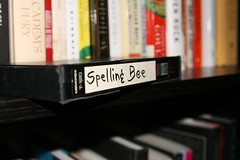Invented Spelling – Get it Right!
”Phonetic spelling is seen by many educators as a way for children to learn to read and write more creatively but it has its opponents,” reports Andrew Gottesman from Chicago.
The writer proceeds to describe invented spelling, for example FMKNS R NIS (pumpkins are nice), as ”a largely uncontroversial educational philosophy that many teachers and experts believe will help kids to write, read and spell better”. The profession absolves itself from responsibility for its use, saying ”Invented spelling is not so much a piece of curriculum as it is something kids do naturally”.
The writer tells us that invented spelling began to surface as an educational philosophy about 20 years ago, ”When researchers discovered that children’s literacy emerges during a span of several years”. It seems hard to believe that it took researchers to discover
such an obvious fact! Another example of invented spelling given in the article cites the word “closed”. The writer comments, quite rightly, that students generally hit the sound of the opening consonant first – in this case K – but then, that students usually get the last consonant next KD (that would only be if they were guided to do so), suggesting that only later – (the same day? – the same year?) – do they fill in the vowels and missing consonants so that the word might become KLOSD, then CLOSSED and finally CLOSED.
One must then go on to consider the question of correction – if it is a part of the philosophy to accept invented spelling, at what point in the mutation of KD does the child know that he has arrived, or is this supposed to occur naturally too? If so, what part is the teacher supposed to play in all this?
Both these examples of
